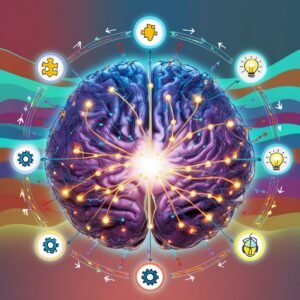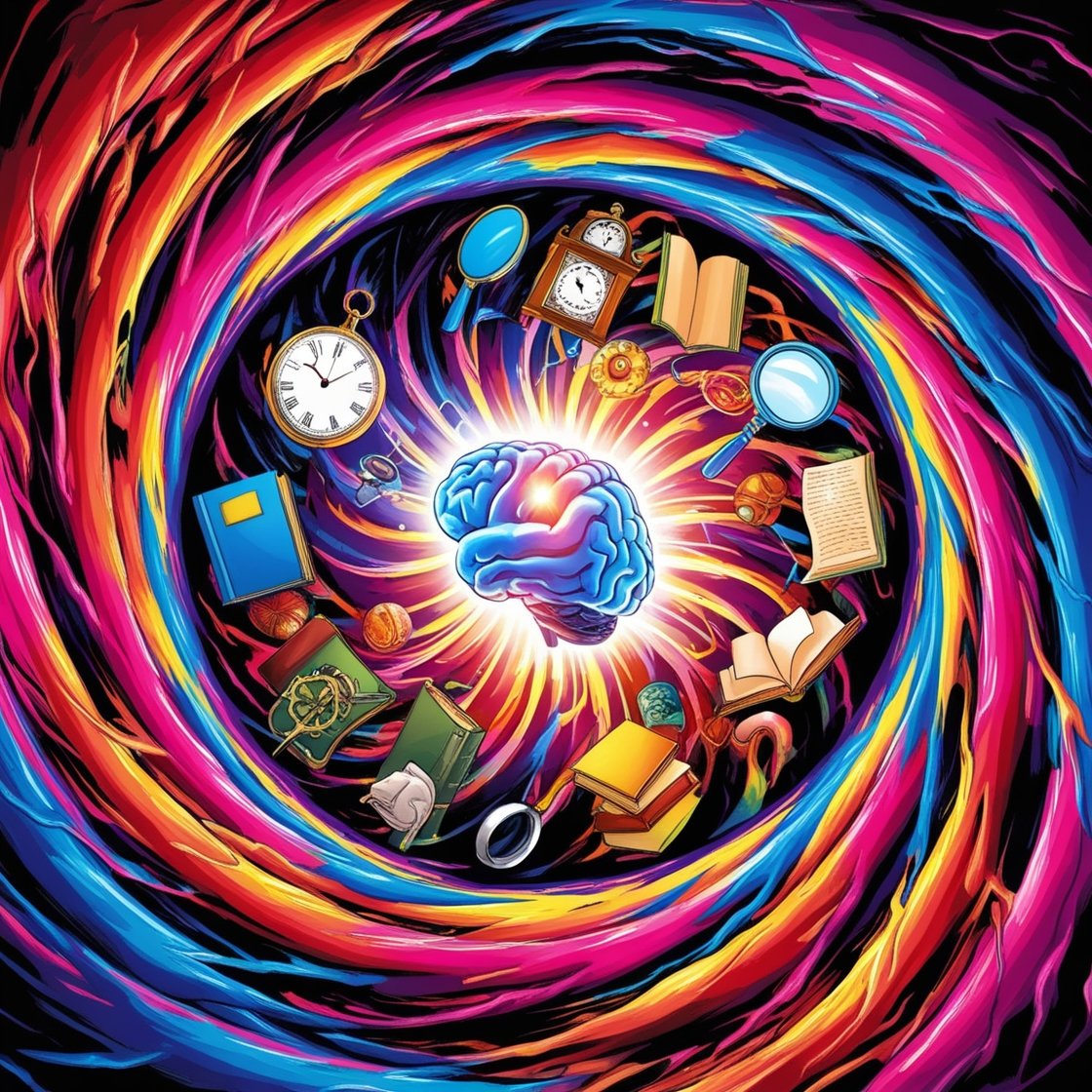Introduction to ADHD Hyperfixation
ADHD hyperfixation is a term increasingly gaining recognition in discussions about Attention Deficit Hyperactivity Disorder (ADHD). This phenomenon describes an intense, focused interest in a particular subject or activity, which often overshadows other responsibilities and interests. This article delves into the multifaceted nature of ADHD hyperfixation, exploring its implications, causes, and management strategies, and how it differs from a mere deep interest.
Understanding ADHD Hyperfixation
ADHD Hyperfixation Defined
ADHD hyperfixation refers to an extended period during which individuals with ADHD become deeply engrossed in a specific task or subject. Unlike general enthusiasm or interest, hyperfixation involves a level of focus that can become all-consuming. This intense engagement can lead to a loss of track of time and neglect of other important activities or responsibilities.
Characteristics of Hyperfixation
Hyperfixation manifests through several key characteristics:
- Intense Focus: Individuals may spend excessive amounts of time on a single activity, often to the detriment of other tasks.
- Difficulty Shifting Attention: Shifting focus away from the hyperfixation can be challenging, even if other responsibilities are pressing.
- Deep Emotional Investment: There is often a strong emotional connection to the hyperfixation, which can make it particularly hard to let go or divert attention elsewhere.
- Neglect of Other Areas: Important tasks or responsibilities might be neglected as the individual prioritizes their hyperfixation.
Causes and Mechanisms Behind Hyperfixation
Neurological Factors
The underlying neurological mechanisms contributing to ADHD hyperfixation are complex. ADHD involves differences in brain structure and function, particularly in areas related to attention and impulse control. Hyperfixation may be linked to the brain’s reward system, which can become highly activated when engaging in stimulating activities. This heightened reward response can make it difficult for individuals to shift their focus away from the hyperfixation.

Psychological and Emotional Influences
Emotional and psychological factors also play a role in hyperfixation. For some, engaging deeply in a specific interest can provide a sense of purpose and escape from stress or anxiety. The intense focus might serve as a coping mechanism, providing temporary relief from other aspects of life that may feel overwhelming.
Hyperfixation vs. Deep Interest
Defining Deep Interest
A deep interest is characterized by a strong passion or enthusiasm for a particular subject. While it can involve significant focus and dedication, it does not typically overshadow other responsibilities or areas of life. Individuals with deep interests can usually balance their enthusiasm with their daily obligations.
Key Differences
The primary differences between ADHD hyperfixation and a deep interest include:
- Intensity and Duration: Hyperfixation involves a more intense and often prolonged focus compared to a deep interest.
- Impact on Daily Life: Hyperfixation can disrupt daily routines and responsibilities, whereas a deep interest usually coexists with other aspects of life.
- Difficulty in Transition: Transitioning away from a hyperfixation can be more challenging than shifting from a deep interest.
Managing ADHD Hyperfixation
Developing Awareness
One of the first steps in managing ADHD hyperfixation is developing awareness of the pattern. Recognizing when hyperfixation occurs and understanding its impact can help individuals implement strategies to manage their focus.
Setting Boundaries
Establishing clear boundaries around the time spent on hyperfixations can help mitigate their impact. This might involve setting specific time limits for engaging in the hyperfixation and scheduling regular breaks to address other responsibilities.
Implementing Structured Routines
A structured routine can provide a framework for balancing hyperfixation with other daily tasks. Utilizing tools like planners or digital reminders can help maintain a more balanced approach to managing time and responsibilities.
Seeking Professional Support
For those struggling to manage hyperfixation effectively, seeking support from healthcare professionals can be beneficial. Therapists and ADHD coaches can offer strategies tailored to individual needs, helping to develop skills for better managing focus and attention.
The Role of ADHD Medication
In some cases, medication prescribed for ADHD may help regulate focus and attention, potentially reducing the intensity of hyperfixation. It is important to consult with a healthcare provider to determine the best approach based on individual needs and circumstances.
Practical Strategies for Daily Life
Using Time Management Techniques
Incorporating time management techniques can help individuals with ADHD navigate hyperfixation. Techniques such as the Pomodoro Technique, where work is broken into intervals with short breaks, can aid in maintaining productivity while managing hyperfixation.
Creating a Balanced Schedule
A balanced schedule that includes a variety of activities can prevent hyperfixation from dominating one’s time. Allocating time for different tasks and responsibilities ensures that hyperfixation does not interfere with other important aspects of life.
Building Support Systems
Engaging with support systems, such as friends, family, or support groups, can provide additional accountability and encouragement. These networks can help individuals stay balanced and manage hyperfixation more effectively.
Lack of Impulse Control: Understanding and Managing Impulsivity
Lack of impulse control is a fundamental characteristic of various psychological and behavioral disorders. It can manifest in a range of ways, from impulsive spending and risky behaviors to challenges in managing emotions and reactions. Understanding the nature of impulse control issues, their underlying causes, and effective management strategies is essential for improving quality of life and achieving better outcomes in both personal and professional settings.
Defining Impulse Control
What Is Impulse Control?
Impulse control refers to the ability to resist immediate temptations or urges in favor of long-term goals and well-being. Individuals with strong impulse control can delay gratification and make considered decisions, whereas those with impaired impulse control often act on spontaneous urges without considering the consequences.
Characteristics of Impulse Control Issues
Individuals struggling with impulse control issues may exhibit several behaviors:
- Spontaneous Decisions: Acting without thinking through potential outcomes.
- Difficulty Delaying Gratification: Struggling to postpone immediate rewards for more substantial long-term benefits.
- Engagement in Risky Behaviors: Participating in activities that have potential negative consequences, such as substance abuse or unsafe driving.
- Emotional Reactivity: Exhibiting intense emotional responses to stimuli, leading to rash actions.
Causes of Impulse Control Issues
Behavioral Patterns
Certain behavioral patterns and habits can reinforce impulse control problems. For example, habitual impulsive actions can become ingrained over time, making it increasingly challenging to break the cycle. Developing awareness of these patterns is crucial for addressing and modifying impulsive behaviors.
Impact of Impulse Control Issues
Personal and Professional Consequences
Lack of impulse control can have significant implications for personal and professional life:
- Relationships: Impulsive behavior can strain relationships with family, friends, and colleagues, leading to conflicts and misunderstandings.
- Financial Stability: Impulsive spending or poor financial decisions can result in financial difficulties and instability.
- Health and Safety: Engaging in risky behaviors can jeopardize physical health and safety, leading to accidents or health problems.
- Work Performance: Impulsivity can affect work performance, resulting in decreased productivity, missed deadlines, and strained workplace relationships.
Managing Impulse Control Issues
Developing Self-Awareness
Understanding and acknowledging impulse control issues is the first step toward effective management. Individuals should observe and reflect on their behaviors, triggers, and patterns of impulsivity to gain insights into their challenges.
Implementing Coping Strategies
Several coping strategies can help manage impulsivity:
- Mindfulness and Self-Regulation: Practicing mindfulness techniques can increase awareness of impulses and enhance self-regulation. Techniques such as deep breathing and meditation can help manage immediate urges.
- Setting Goals and Boundaries: Establishing clear goals and boundaries can provide structure and reduce opportunities for impulsive actions. Creating actionable plans and setting limits can help individuals stay focused on long-term objectives.
- Developing Healthy Habits: Engaging in healthy habits, such as regular exercise, balanced nutrition, and sufficient sleep, can improve overall well-being and support better impulse control.
Seeking Professional Help
For individuals struggling with severe impulse control issues, seeking support from mental health professionals is advisable. Therapists and counselors can provide personalized strategies and interventions to address underlying causes and develop effective coping mechanisms. In some cases, medication may be prescribed to help manage symptoms associated with impulse control disorders.
Creating Supportive Environments
Supportive environments, including understanding family members, friends, and colleagues, can play a crucial role in managing impulse control issues. Open communication, empathy, and encouragement can help individuals feel supported and motivated to make positive changes.
Anxiety and Stressful Environments: Navigating and Managing Challenges
Anxiety and stressful environments often go hand-in-hand, significantly impacting mental health and overall well-being. The interaction between anxiety and stressors in one’s environment can create a challenging cycle, exacerbating feelings of distress and making it difficult to manage daily responsibilities. This article explores the relationship between anxiety and stressful environments, their effects, and strategies for managing and mitigating these challenges.

Understanding Anxiety
Defining Anxiety
Anxiety is a mental health condition characterized by persistent feelings of worry, fear, or unease. It can manifest in various forms, including generalized anxiety disorder (GAD), panic disorder, social anxiety disorder, and specific phobias. Anxiety often involves physical symptoms such as rapid heartbeat, sweating, and muscle tension, alongside psychological symptoms like excessive worry and difficulty concentrating.
Symptoms and Effects
The symptoms of anxiety can vary but generally include:
- Excessive Worry: Constantly feeling anxious about everyday situations or potential future events.
- Physical Symptoms: Experiencing symptoms such as headaches, stomachaches, or a racing heart.
- Difficulty Sleeping: Struggling with insomnia or disrupted sleep patterns.
- Impaired Concentration: Finding it hard to focus on tasks or make decisions.
Impact of Stressful Environments
Defining Stressful Environments
A stressful environment is one where individuals face ongoing pressures or challenges that create emotional or psychological strain. This can include high-pressure work settings, chaotic home environments, or difficult social situations. Stressful environments often contribute to or exacerbate anxiety symptoms, creating a feedback loop of increasing stress and anxiety.
Characteristics of Stressful Environments
Stressful environments often feature:
- High Demands: Environments with excessive demands or expectations, such as high-stress jobs or academic pressures.
- Lack of Control: Situations where individuals feel they have little control over their circumstances or outcomes.
- Interpersonal Conflict: Environments characterized by frequent conflicts or poor relationships with others.
- Unpredictability: Situations where outcomes are uncertain or constantly changing, leading to feelings of insecurity.
Effects on Mental Health
Exacerbation of Anxiety Symptoms
Stressful environments can significantly worsen anxiety symptoms. The constant pressure and demands can lead to heightened feelings of worry, increased physical symptoms, and difficulties in managing daily activities. The combination of anxiety and stress can create a compounded effect, making it harder for individuals to cope effectively.
Development of Additional Mental Health Issues
Prolonged exposure to stressful environments can contribute to the development of additional mental health issues, such as depression or burnout. The ongoing strain and emotional burden can affect overall mental well-being, leading to a decline in quality of life and functioning.
Strategies for Managing Anxiety and Stressful Environments
Developing Coping Skills
Effective coping skills are crucial for managing anxiety and navigating stressful environments. Some strategies include:
- Mindfulness and Relaxation Techniques: Practicing mindfulness, meditation, and deep breathing exercises can help reduce anxiety and manage stress.
- Time Management: Implementing time management techniques, such as prioritizing tasks and setting realistic goals, can help alleviate feelings of being overwhelmed.
- Healthy Lifestyle Choices: Maintaining a balanced diet, engaging in regular physical activity, and ensuring adequate sleep contribute to overall well-being and resilience against stress.
Creating a Supportive Environment
Creating a supportive environment can help mitigate the effects of stress and anxiety. This involves:
- Building a Strong Support Network: Surrounding oneself with supportive friends, family, and colleagues can provide emotional support and practical assistance.
- Seeking Professional Help: Consulting with mental health professionals, such as therapists or counselors, can provide guidance and strategies for managing anxiety and stress.
- Improving Communication: Open and effective communication can help address interpersonal conflicts and reduce stress within relationships.
Implementing Stress Reduction Techniques
Incorporating stress reduction techniques into daily life can be beneficial:
- Engaging in Hobbies: Participating in enjoyable activities and hobbies can provide a sense of relaxation and escape from stress.
- Setting Boundaries: Establishing clear boundaries between work and personal life can help prevent burnout and manage stress levels.
- Practicing Self-Care: Regular self-care practices, such as taking breaks and engaging in activities that promote relaxation, are essential for managing stress.
Building Resilience
Resilience is the ability to adapt and recover from stress and adversity. Developing resilience involves:
- Cultivating a Positive Mindset: Fostering optimism and focusing on positive aspects of life can enhance resilience and coping abilities.
- Building Problem-Solving Skills: Strengthening problem-solving skills can help individuals navigate challenges and reduce feelings of helplessness.
- Seeking Personal Growth: Embracing opportunities for personal growth and development can contribute to increased resilience and overall well-being.











